Ian Melin-Jones
Voith and Truetzschler Nonwovens win Living Standards Award
At its New Year Reception in Vienna on January 24, 2019, Austrian Standards presented five companies, including the Voith Group, with the Living Standards Award for the development and use of innovative and practical quality standards. Through the development of a new quality standard, Voith and Truetzschler have managed to combine the expertise of the nonwoven and paper industries and in doing so have produced a customized international safety standard for wet-laid nonwoven machines that can be applied in both sectors.
Experts from Voith worked with Truetzschler Nonwovens to elaborate the content of the Voith standard VN 3260 and then develop it further to produce DIN EN ISO 22291 - safety requirements for wet-laid nonwoven machines.
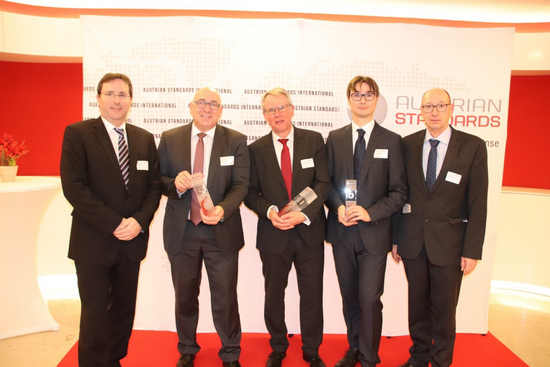 The award winners from Voith and Truetzschler from left to right: Herbert Haydn, Quality Order Manager Voith Paper Rolls GmbH & Co KG, Manfred Gloser, Senior Vice President Quality J.M. Voith SE & Co. KG, Egon Krätschmer CFO Voith GmbH & Co. KGaA, Christian Knörzer Truetzschler Nonwovens & Man-Made Fibers GmbH and Thomas Kastler, Group Standardization J.M. Voith SE & Co. KG.
The award winners from Voith and Truetzschler from left to right: Herbert Haydn, Quality Order Manager Voith Paper Rolls GmbH & Co KG, Manfred Gloser, Senior Vice President Quality J.M. Voith SE & Co. KG, Egon Krätschmer CFO Voith GmbH & Co. KGaA, Christian Knörzer Truetzschler Nonwovens & Man-Made Fibers GmbH and Thomas Kastler, Group Standardization J.M. Voith SE & Co. KG.
The newly developed ISO 22291 now enables manufacturers to design and implement standardized safety equipment. This reduces the amount of engineering work involved, leads to a lower accident risk, boosts a company’s competitive position and thus helps it tap into new markets. In the course of the introduction of the new standard, Voith chaired the Technical Committee ISO/TC 72/SC 8/WG 3 in the segment textile machines.
As a hybrid machine, the webforming machine can be used in both the textile and the paper industries. As different safety requirements apply in these two sectors, it was necessary to produce a customized international safety standard. This was particularly necessary because customers had very different expectations. This standard now defines, in a readily comprehensible way, the requirements that these machines have to meet to ensure safe operation.
Voith and Truetzschler jointly developed the manufacturing process for wet-laid and hydroentangled nonwovens. The production lines on which these materials are produced consist partly of paper machine components and partly of components from nonwoven machines. The manufacturing process for wet-laid nonwovens is similar to that for producing paper.
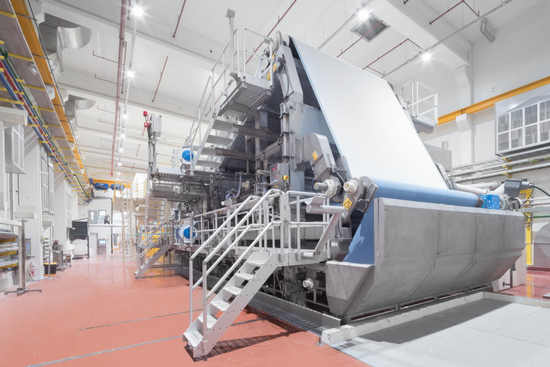 Voith HydroFormer WLM 1 Albaad, Dimona, Israel
Voith HydroFormer WLM 1 Albaad, Dimona, Israel
About Truetzschler
With a workforce of around 3,000, Truetzschler is one of the leading manufacturers of textile machines in the world. It specializes in machines, equipment and accessories for the slubbing (spinning preparation), nonwoven and man-made fiber industries. The more than 125-year-old company has its headquarters in Mönchengladbach, Germany, as well as other facilities in Germany, India, China, Brazil, the US and Switzerland.
Truetzschler Nonwovens is a division of Truetzschler Nonwovens & Man-Made Fibers and resulted from the acquisition and amalgamation of the long-established companies Fleissner, Erko/Hergeth and Bastian. It offers solutions for the entire nonwoven process chain, from fiber preparation, web formation, bonding and finishing to winding. The man-made fibers (filament) division provides solutions for the extrusion and spinning of carpet and industrial yarns.
About the Voith Group
The Voith Group is a global technology company. With its broad portfolio of systems, products, services and digital applications, Voith sets standards in the markets of energy, oil & gas, paper, raw materials and transport & automotive. Founded in 1867, the company today has more than 19,000 employees, sales of € 4.2 billion and locations in over 60 countries worldwide and is thus one of the large family-owned companies in Europe.
The Group Division Voith Paper is part of the Voith Group. As the full-line supplier to the paper industry, it provides the largest range of technologies, services, components and products on the market and offers paper manufacturers solutions from one single source. The company’s continuous stream of innovations takes papermaking to the next level and facilitates resource-conserving production. With its Servolution concept, Voith offers its customers tailored service solutions for all sections of the production process. Voith Papermaking 4.0 ensures that equipment is optimally connected, while the secure use of generated data enables paper manufacturers to improve plant availability and efficiency.
Valmet to replace process and quality controls at Delkeskamp mill, Germany
Valmet will supply a Valmet DNA Automation System and a Valmet IQ Quality Control System to Delkeskamp's cartonboard machine BM1 in Nortrup, Germany. The new systems will enable the mill to produce the desired end product quality more efficiently.
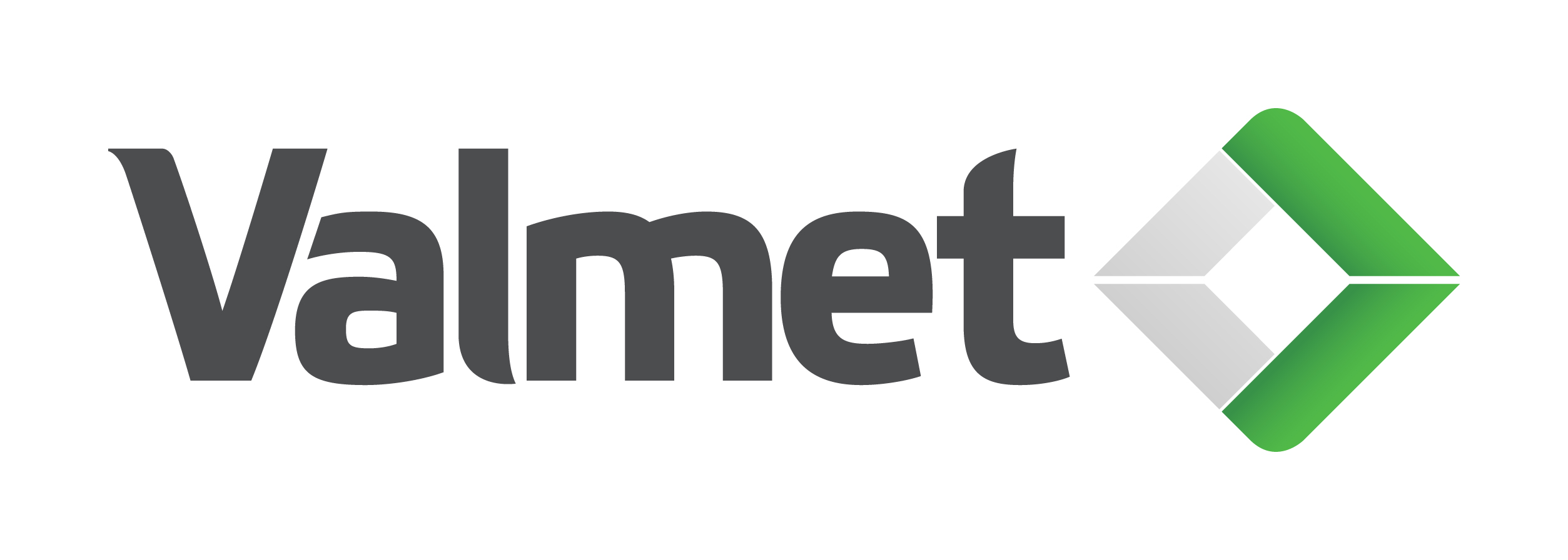 The order was included in Valmet's first quarter 2019 orders received. Typically, the value of these kinds of automation system deliveries is below EUR two million.
The order was included in Valmet's first quarter 2019 orders received. Typically, the value of these kinds of automation system deliveries is below EUR two million.
"With experience gained from hundreds of installations and our papermaking knowledge, we were able to offer a complete solution to meet the customer's needs. Our quality control system is well integrated into the Valmet DNA Automation System. This makes operation and maintenance much easier for the customer, since only one user interface with the same tools is needed for both systems. Advanced applications, such as Valmet DNA Help, enhance the operation even more," says Martin Grundmann, Sales Manager, Automation, Valmet.
Information about Valmet's delivery
Valmet's delivery consists of a Valmet DNA Automation System for the process controls of the board machine and effluent treatment, partial wet-end machine controls, and a Valmet IQ Quality Control System (QCS) with one scanner, related measurements as well as machine- and cross-direction controls. Valmet DNA Help guides operators and indicates reasons for disturbances. These systems will replace the mill's existing obsolete systems and bring its automation to a new level by improving process reliability, runnability and end product quality.
Information about the customer Delkeskamp
Delkeskamp is a fourth-generation family-run company that produces testliner, fluting and kraftliner replacement paper as well as corrugated board with diverse combinations of corrugation types. The company's focus in paper production lies in high-grammage kraftliner replacement paper and a fast and flexible supply. Even with small volumes, the mill is able to fulfill individualized technical requirements along with other design and printability requests for the packaging during the paper production.
Valmet is the leading global developer and supplier of process technologies, automation and services for the pulp, paper and energy industries. We aim to become the global champion in serving our customers.
Valmet's strong technology offering includes pulp mills, tissue, board and paper production lines, as well as power plants for bioenergy production. Our advanced services and automation solutions improve the reliability and performance of our customers' processes and enhance the effective utilization of raw materials and energy.
Valmet's net sales in 2018 were approximately EUR 3.3 billion. Our more than 13,000 professionals around the world work close to our customers and are committed to moving our customers' performance forward - every day. Valmet's head office is in Espoo, Finland and its shares are listed on the Nasdaq Helsinki.
Read more www.valmet.com
Burgo cartaceo#01 and illustri festival 2019
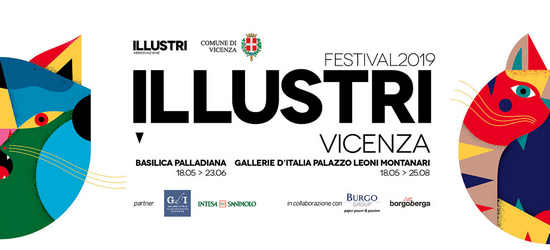
Illustri Festival 2019 will be held in Vicenza from May 18th to June 23rd, with the collaboration of Burgo Group which will present its project Cartaceo#01, Paper: a never-ending material.
After the success of BookCity Milano 2018, the illustrations of Emiliano Ponzi and the storytelling of Gabriella Greison arrive in Vicenza to tell us a story about the paper as an never-ending material, a material with endless possibilities, born form a machine that seems to never end, which throughout human history has taken our dreams and stories and propelled them into the future in a never-ending exchange, transforming over and again into new and different products.
The exhibition inside the Basilica Palladiana (Sala degli Zavatteri), curated by Francesco Poroli, reproduces the unfolding of a leporello, the paper object created by the collaboration between Ponzi and Greison, while the animations curated by Emiliano Ponzi run on a monitor togegher with the reading of the story Paper: a never-ending material.
The opening of all the exhibitions is scheduled for Saturday, May 18th from 10.00 am. The complete program and contents of the exhibitions are available at the following link:
Leicester Tissue Manufacturer set to Expand with HSBC UK Support
Leicester Tissue Company (LTC), a toilet and kitchen roll manufacturer, is set to increase its manufacturing capabilities by up to 100 per cent after securing a £6 million funding package from HSBC UK.
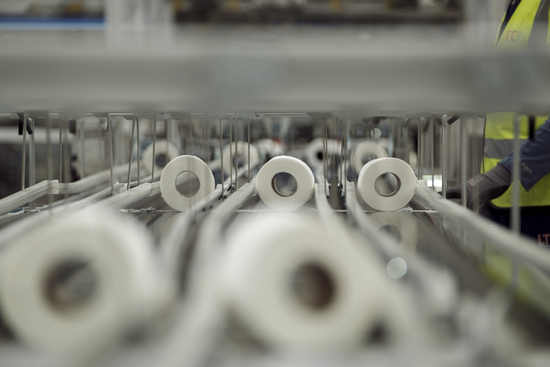
The business, which is currently operating at full capacity, is in the process of installing two new production lines that will complete later this year at its new 105,000 sq. ft. plant in Thurmaston, Leicester. The multi-million pound investment will create an extra 50 full-time jobs.
LTC currently produces 20,000 tonnes of tissue per year and supplies to high-profile retailers, including Poundland, Aldi and Wilkinsons. Once the new lines have been implemented, LTC will generate an extra 20,000 tonnes of tissue per year, enabling the business to fulfill new interest from several supermarket brands.
Ayaz Tejani, Managing Director of LTC, said:
“As a manufacturer for some of the UK’s leading retail brands, it’s important that we regularly invest in new machinery to meet high consumer demands. We have a long-term vision for growth and these plans are currently underway with the installation of the new production lines. We’re incredibly grateful to our HSBC UK Relationship Director, Richard Parker, who understood our business and funding requirements. We look forward to working closely with him again as the business grows.”
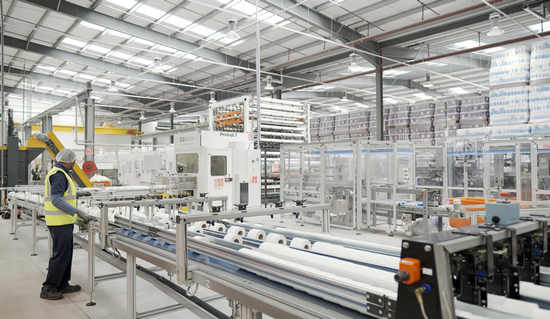
Roger Pratt, Area Director for Corporate Banking in East Midlands, HSBC UK, said:
“HSBC UK is committed to supporting ambitious SMEs with their expansion plans, and LTC is no exception. The tissue market is extremely competitive and due to rising consumer demand, Ayaz and his team have a great opportunity to grow the business. We’re excited about the business’s potential and we wish them the best for the future.”
Established in 2013, LTC has experienced rapid growth. After six years trading, the business has increased its turnover to £20 million and employs 70 people. It prides itself on producing quality paper and with future capacity set to increase, LTC has the foundations to grow the business further. In the next 12 months, LTC hopes its new investment will increase annual turnover by 90 per cent to £38 million.
HSBC Holdings plc
HSBC Holdings plc, the parent company of HSBC, is headquartered in London. HSBC serves customers worldwide from offices in 66 countries and territories in our geographical regions: Europe, Asia, North America, Latin America, and Middle East and North Africa. With assets of $2,659bn at 31 March 2019, HSBC is one of the world’s largest banking and financial services organisations.
Voith introduces online platform MyVoith for digital applications and services
MyVoith is a global platform that brings together the company’s digital services and business related information in one location. The platform offers users personalized access to their applications, services, and data from the Voith world. These include industry-specific webshops, asset management solutions and further self-service applications, as well as the Voith IIoT (Industrial Internet of Things) applications and services. Applications from different industries will be available for the global launch, further applications will be added over time. Voith implements the platform my.voith.com for customers, partners, and suppliers of the Voith Group.
MyVoith as a global platform for digital applications and services
MyVoith is consolidating Voith’s digital applications and services on one single platform – globally and across all of its industries based on latest security and data privacy standards. After logging in, registered users can configure and personalize the dashboard according to their individual needs. In the App Zone, users will have access to industry-specific apps such as the Voith webshop and service applications or IIoT solutions. The Voith IIoT platform OnCumulus is also integrated into MyVoith. This gives users the ability to control IIoT applications directly from the platform. Furthermore, the online platform MyVoith serves as a digital central point of contact for all communication with Voith – from order history to exclusive, personalized information.
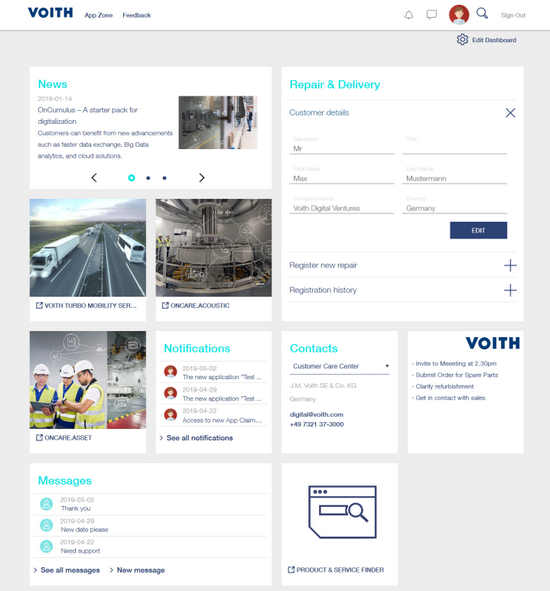 The dashboard of MyVoith is easy to use and offers the ability for personalization.
The dashboard of MyVoith is easy to use and offers the ability for personalization.
“During the development of MyVoith we have taken care to enhance and continuously improve the platform based on customer requirements and feedback. Consequently, we pay special attention to and rely on the comments and ideas from our customers and partners”, states Felix Holzer, Head of E-Business Operations at Voith.
Single sign-on for all features for a consistent user experience
MyVoith gives customers the possibility to have access to Voith applications or to use a quick and easy way to contact Voith specialists regardless of time zone or region. The platform is developed as a responsive web application and can easily be reached via smartphones and other mobile devices like tablets. My.voith.com will replace the existing collaboration platform, Voith Extranet, and offers customers and partners a state-of-the-art digital user experience in a highly secure environment. The underlining technologies and protocols feature single sign-on across all applications as well as dynamic and smooth integration capabilities.
One platform instead of many different access points
Customers, partners and suppliers benefit from a comprehensive platform compared to the previous individual access points for different Voith applications. “MyVoith is the next logical and systematic step in our digitalization strategy. It has the goal of providing innovative solutions and improving productivity through digital services,” explains Holzer. By bringing together all of Voith’s services on a central platform with a single login, Voith offers its customers a consistent, standardized, and user-friendly experience. “MyVoith creates the perfect framework for our customers and partners to fully exploit the potential of digitalization in their daily business,” says Holzer.
If you are interested in more information about MyVoith please go to www.voith.com/myvoith
About the Voith Group
The Voith Group is a global technology company. With its broad portfolio of systems, products, services and digital applications, Voith sets standards in the markets of energy, oil & gas, paper, raw materials and transport & automotive. Founded in 1867, the company today has more than 19,000 employees, sales of € 4.2 billion and locations in over 60 countries worldwide and is thus one of the large family-owned companies in Europe.
The Group Division Voith Paper is part of the Voith Group. As the full-line supplier to the paper industry, it provides the largest range of technologies, services, components and products on the market and offers paper manufacturers solutions from one single source. The company’s continuous stream of innovations takes papermaking to the next level and facilitates resource-conserving production. With its Servolution concept, Voith offers its customers tailored service solutions for all sections of the production process. Voith Papermaking 4.0 ensures that equipment is optimally connected, while the secure use of generated data enables paper manufacturers to improve plant availability and efficiency.
Pulse production opens for the manufacturing of specialty paper
Producing paper is about large volumes. The step from manufacturing in lab to industrial production therefore faces great challenges. Uncertainty regarding supply, demand and price often makes new concepts stick to the "valley of death". You don't want to build a factory until you know that everything works.
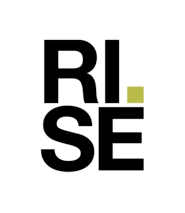 Pilot facilities are a good way to bridge this gap. But even here, it can be difficult if the amount of pulp to be tested is small. At RISE, researchers and operating staff have now found a way forward through so-called pulse production.
Pilot facilities are a good way to bridge this gap. But even here, it can be difficult if the amount of pulp to be tested is small. At RISE, researchers and operating staff have now found a way forward through so-called pulse production.
“Normally we need at least one ton of pulp to run the full-scale pilot paper machine, FEX. The fact that we have now managed to run the machine with as little as 40 kg is a breakthrough. This means that companies that are considering expanding their product portfolio with specialty paper can test this in full scale without having to produce large quantities of raw material,” says Mikael Magnusson, researcher in paper technology.
In practice, the new method of pulse production means that the plant is started with ordinary pulp. Then switched to another chest with special pulp without disrupting production.
“Manufacturing was extra challenging as the pulp contained fibres with very low bonding properties. The excitement was tremendous for both RISE and present customers to see if the web were to break or if the extremely short production would work. But with careful preparation and talented operating staff it all worked out well and the production pulse came to a cheer, says project manager Mikael Bouveng.
The new method means that the threshold is significantly reduced for investments in narrow products with a high profit margin or where demand is low.
Previously successful results with pulse production will be presented at the international conference PaperCon 5-8 May in Indianapolis, USA.
For more information, please contact Mikael Magnusson, email This email address is being protected from spambots. You need JavaScript enabled to view it., tel. +46 76 876 71 92
About RISE
RISE is the Swedish Research Institute and innovation partner. In international collaboration with industry, academia and the public sector, we ensure the competitiveness of the business community and contribute to a sustainable society. Our 2,700 employees support and promote all manner of innovative processes. RISE is an independent, state-owned research institute that offers unique expertise and about 100 testbeds and demonstration facilities, instrumental in future-proofing technologies, products and services. www.ri.se
Toscotec to rebuild the dryer section of PM1 of Cartiera Marchigiana in Italy.
Cartiera Marchigiana selected Toscotec to completely rebuild the dryer section of its paper machine at Montelupone, Macerata, Italy. This is a repeated order for Toscotec, who has recently been entrusted with a turnkey rebuild project by Cartiera Cama, which has the same ownership of Cartiera Marchigiana. Thanks to the advantages of TT SteelDryer technology, the rebuild will boost PM1’s drying capacity and efficiency, without increasing the paper machine’s length.
Toscotec will supply a new frame for several dryer batteries included in the rebuild and 23 TT SteelDryers, designed for an operating steam pressure of 10 barg, featuring bearing housings, steam fits and turbulence bars. The scope also includes stretchers, guides, doctors, canvas rolls and walkways, as well as an overhaul of the mechanical drives. The service package includes onsite erection, supervision, commissioning and start-up assistance.
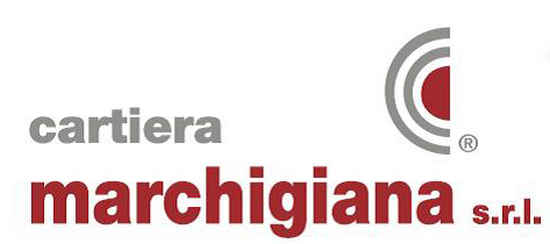
The delivery is planned in two phases, from July through December 2019. PM1 has a reel trim of 2,340 mm and produces core board and carton board from 650 to 1,200 gsm, using 100% waste paper.
Davide Bettanti, CEO of Cartiera Marchigiana, says, “Both for Cartiera Cama and for Cartiera Marchigiana we were looking to invest in the best available technology, because we rely on technological innovation to reduce the environmental impact of our mills. We placed two major orders together for our two production bases, because we want to ensure the same product innovation and quality upgrade across our mills, to ensure the flexibility we need to satisfy the demands of the market. Our expansion, in terms of production increase, must also go hand in hand with the rationalization of our energy consumption and with a significant efficiency boost. We have high expectations for the outcome of Toscotec’s rebuilds.”
Enrico Fazio, Toscotec’s P&B Head of Sales, says “We are very pleased about this second order. Just like we are doing for Cartiera Cama, also for Cartiera Marchigiana we will design and implement the best solution, in order to deliver on the mill’s plans of production increase and energy use optimization.”
About Cartiera Marchigiana S.r.l.
Established in 1961 by Galbiati Giancarlo, Cartiera Marchigiana manufactures chipboard in sheets and laminated and printed cardboard, for a total capacity of 23,386 tons of cardboard in 2018, which is primarily absorbed by the board games and footwear sectors. Thanks to a strategic logistic position, almost 90% of its production is dedicated to the Italian market. Certified ISO 14001 since 2016, the company is focused on the reduction of its environmental footprint in the areas of water, paper and energy, using 100% recycled paper as raw material.
For further information, please contact:
Enrico Fazio, Head of Sales, Toscotec Paper & Board division, This email address is being protected from spambots. You need JavaScript enabled to view it.
New study confirms non-recycled paper is better for the climate
When produced where the environmental impact of producing electricity is low, and where the forest is sustainably managed, paper from fresh fibres has lower environmental impact than paper from recycled fibres. That’s the conclusion of a new life cycle study made by IVL, Swedish Environmental Research Institute.
![]() The study uses a Life Cycle Assessment (LCA) methodology, comparing 100% fresh fibre-based paper produced at Holmen Paper in Sweden with 100% recycled-based paper produced with German production conditions. The study shows that paper based on fresh fibre has a lower environmental impact than recycled paper, not least when it comes to emissions. The study was also subject to a third-party review.
The study uses a Life Cycle Assessment (LCA) methodology, comparing 100% fresh fibre-based paper produced at Holmen Paper in Sweden with 100% recycled-based paper produced with German production conditions. The study shows that paper based on fresh fibre has a lower environmental impact than recycled paper, not least when it comes to emissions. The study was also subject to a third-party review.
“In Holmen, we are extremely focused on sustainability and it’s vital to know that when we embarked on this journey, we were studying our own environmental impact and were in no way interested in discrediting recycled paper. But the key findings in this study are very important because it shows that the general misconception that recycled paper is better for the climate is in fact wrong”, says Lars Lundin, CEO at Holmen Paper.
An important variable in the findings of the study is the energy mix. Producing paper from fresh wood resources requires more energy than paper produced from recycled resources. However, the study shows that if low-emission renewable energy resources are used for the fresh fibre production, the environmental effects can be significantly reduced. One reason the Swedish scenario does so well is that the Swedish electricity mix has a lower environmental impact compared to the German.
“The study shows that paper from fresh fibres has a lower environmental impact in several aspects. When comparing climate impact, eutrophication and acidification the difference between fresh and recycled fibres is significant in favour for the fresh fibre, despite higher energy consumption”, says Håkan Stripple from the Swedish Environmental Research Institute.
Fresh fibre is also essential for the whole recycling process. The cellulose fibres in paper cannot be recycled more than about 5-7 times. After that, the fibre quality is so low you can no longer use it to produce paper. Therefore, the addition of fresh fibre is vital for the paper recycling process.
“To combat climate change, we need to lower our emissions and replace fossil based materials. All paper is renewable, degradable and climate smart, but we need to acknowledge the fact that paper from fresh fibres is, in many cases, better for the climate and an essential prerequisite for recycled paper”, concludes Lars Lundin.
The Whitepaper “Environmental benefits of fresh fibre” is available to download at www.holmen.com
Holmen’s business concept is to own and add value to the forest. The forest holdings form the basis of the business – an ecocycle in which the raw material grows and is refined into everything from wood for climate-smart building to renewable packaging, magazines and books. The forest is managed to provide a good annual return and stable value growth while our production operations are run with a focus on profitability and greater value added. In 2018 Holmen’s net sales were just over SEK 16 billion and the group has approx. 3 000 employees. Holmen’s shares are listed on Nasdaq Stockholm, Large Cap. For more information, visit www.holmen.com
Resolute Completes Five-Year Extension of ABL Credit Facility
Resolute Forest Products Inc. have just announced a 5-year extension of its senior secured asset-based revolving credit facility ("ABL credit facility") with an aggregate lender commitment of up to $500 million at any time outstanding, subject to borrowing base availability based on specified advance rates, eligibility criteria and customary reserves.
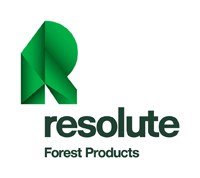 "This successful extension improves certain terms and conditions, and supports the execution of our growth and transformation initiatives for the future," said Yves Laflamme, president and chief executive officer. "By renewing and extending the ABL through May 2024, we are taking advantage of our strong financial position and of attractive bank market conditions to lock-in a competitive source of liquidity for the long-term," added Remi Lalonde, senior vice president and chief financial officer.
"This successful extension improves certain terms and conditions, and supports the execution of our growth and transformation initiatives for the future," said Yves Laflamme, president and chief executive officer. "By renewing and extending the ABL through May 2024, we are taking advantage of our strong financial position and of attractive bank market conditions to lock-in a competitive source of liquidity for the long-term," added Remi Lalonde, senior vice president and chief financial officer.
The ABL facility is completely undrawn, with the exception of approximately $51 million of ordinary course letters of credit outstanding. The extension of the ABL credit facility includes a number of modifications, including a voluntary reduction in the lenders commitment of $100 million, which will lower fees while preserving the current available liquidity. The $500 million facility includes a $300 million tranche available to Resolute's U.S. borrowers and its Canadian borrowers, as well as a $200 million tranche available only to its U.S. borrowers, in each case subject to the borrowing base availability of those borrowers. The facility includes a $60 million swingline sub-facility and a $200 million letter of credit sub-facility. The credit agreement also provides for an uncommitted ability to increase the revolving credit facility by up to $500 million, subject to certain terms and conditions.
The credit agreement for the ABL facility contains customary covenants, representations and warranties, and events of default for asset-based credit agreements of this type. The company's obligations under the facility are guaranteed by certain material subsidiaries and they are secured by first priority liens on accounts receivable, inventory and related assets.
The ABL credit facility is provided by a syndicate of six banks, with Bank of America as administrative agent and collateral agent. Bank of America, Wells Fargo and Bank of Montreal acted as joint lead arrangers and joint bookrunners; CIBC and TD acted as co-documentation agents.
Troutman Sanders LLP and McCarthy Tétrault LLP represented Resolute.
About Resolute Forest Products
Resolute Forest Products is a global leader in the forest products industry with a diverse range of products, including market pulp, tissue, wood products, newsprint and specialty papers, which are marketed in close to 70 countries. The company owns or operates some 40 facilities, as well as power generation assets, in the United States and Canada. Resolute has third-party certified 100% of its managed woodlands to internationally recognized sustainable forest management standards. The shares of Resolute Forest Products trade under the stock symbol RFP on both the New York Stock Exchange and the Toronto Stock Exchange.
Resolute has received regional, North American and global recognition for its leadership in corporate social responsibility and sustainable development, as well as for its business practices. Visit www.resolutefp.com for more information.
SOURCE Resolute Forest Products Inc.
South African student named among winning wood scientists in global competition
The International Council of Forest and Paper Associations (ICFPA) has announced the three global winners of the 2018-2019 Blue Sky Young Researchers and Innovation Award. University of Pretoria Masters student Martin Wierzbicki along with Elina Pääkkönen (Finland) and Chinmay Satam (USA) were lauded for their novel wood-based research projects. They made their official presentations in Vancouver, Canada last week to industry executives at the ICFPA-hosted international CEO Roundtable, a biennial gathering of forestry and forest product companies.
The international competition – now its second round – aims to attract submissions from aspiring scientists and young engineers who are developing novel solutions using wood fibre, process improvements or other products along the forestry-pulp-paper value chain.
The research projects were judged against the theme of disruptive technologies that can revolutionise the future of forest-based products and services. The 2018/2019 contest invited submissions in two particular areas: future generation forestry and innovation in the wood-based industry. These issues are particularly topical as the world seeks greener, sustainable and renewable alternatives to packaging, fuel and materials.
Pääkkönen, Satam and Wierzbicki inspired Steve Voorhees, CEO of WestRock. “We recognize them for their many years of work to develop these exciting renewable wood and paper-based solutions,” said Voorhees.
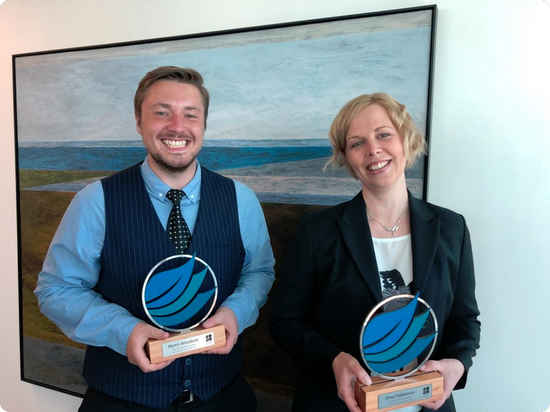 Martin Wierzbicki and Elina Pääkkönen
Martin Wierzbicki and Elina Pääkkönen
Designer wood for better industrial processing
Martin Wierzbicki, an MSc graduate from University of Pretoria in South Africa carried out research on genome-based biotechnology for designer wood.
Wierzbicki’s work has focused on how the genetic makeup of trees can be changed to improve how wood reacts to industrial processing in order to maximise the extraction of biopolymers such as cellulose, lignin and xylan (a complex sugar found in plant cells). Separating wood components into distinct processing streams as cleanly as possible allows each component to be used to make high value products, but is hampered by the strong associations between wood biopolymers that make industrial breakdown difficult and costly.
“I have combined genetics, genomics, big data and wood chemistry analyses to build a gene network model,” he explained. “My model treats the tree as a ‘living biorefinery’, where we have control of how the wood is made.”
He hopes that his work will help companies to improve breeding techniques to reduce the loss of valuable components during wood processing and to introduce novel properties for advanced biomaterial production in trees.
Foam cushioning made from renewable fibres?
“Could we replace non-renewable packaging materials, like expanded polystyrene (EPS), with more sustainable materials?” posed Elina Pääkkönen, a senior scientist at VTT, the Technical Research Centre of Finland.
The objective of the work is to develop a viable earth-friendly packaging material from wood fibres using foam-assisted forming technology. “This is much like a common polystyrene foam cushioning, but made from common papermaking pulps,” explained Pääkkönen.
The process involves mechanically mixing fibres, water and a foaming agent resulting in an aqueous fibre-containing foam with an air bubble content between 50-70%. These foam-formed fibre products are based on a 100% renewable material – wood fibres or even recycled paper fibres – and can be recycled or composted in the same way as cardboard packaging. Another advantage is that companies already have the machinery and expertise with which to produce this material.
Compostable and recyclable packaging barrier made from cellulose and crab shells
Chinmay Satam, a PhD chemical engineering candidate at the Georgia Institute of Technology in the USA, is developing multi-layer films made from chitin nanofibre and cellulose nanocrystals for sustainable barrier applications to replace commonly used plastic barriers such as polyethylene terephthalate (PET).
Oxygen and water barriers are very important, especially in food packaging and electronic applications, but these tend to be petrochemical derived and non-renewable. Satam has been exploring the potential of biomaterials and developing a cost-competitive, compostable, recyclable and renewable material.
Like cellulose (found in plant cell walls), chitin is an abundantly occurring substance found in the exoskeletons of crabs, insects and spiders, as well as the cell walls of fungi. “Chitin and cellulose are known to be excellent oxygen barriers but not as effective against water,” said Satam, “however by combining tiny chitin nanofibres and cellulose nanocrystals with a cheap renewable polymer with good water vapour barrier properties like polylactic acid, I have developed a composite that yields the best of both.” His focus now lies in process development to bring the production of these materials to pulp mills.
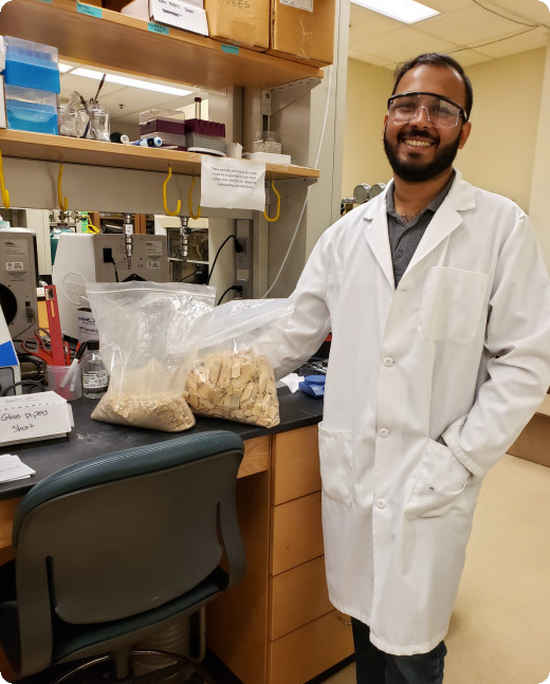 Chinmay Satam
Chinmay Satam
The competition process
Each country association hosted a regional round calling upon young researchers to showcase their work. After being put through a local adjudication process, countries submitted their top contenders for the global round.
“The jury unanimously praised the quality of the submissions but had the difficult duty of selecting the winners from 13 strong entries from around the world,” said Bernard de Galembert, Innovation and Bioeconomy Director at the Confederation of European Paper Industries (CEPI), who led the competition process.
A diverse jury of prominent experts from the United Nations Food and Agriculture Organisation (FAO), the International Union of Forest Research Organisations (IUFRO), forest-based company Metsä Spring and research institutes from New Zealand and Canada evaluated the submissions against several criteria: compliance with the overall theme, level of innovation, quality of the abstract, clarity of the results, capacity to solve industry challenges and ambitions as well as probability of implementation and upscaling.
